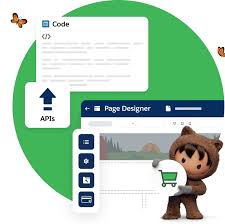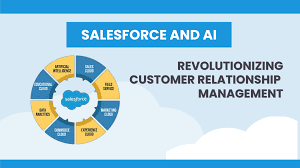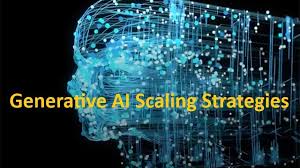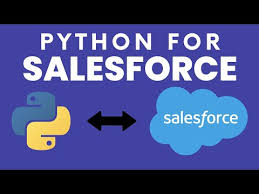AI Innovation at Salesforce
AI innovation is advancing at an unprecedented pace, unlike anything I’ve seen in nearly 25 years at Salesforce. It’s now a top priority for every CEO, CTO, and CIO I speak with. As a trusted partner, we help customers innovate, iterate, and navigate the evolving AI landscape. They recognize AI’s immense potential to revolutionize every aspect of business, across all industries. While they’re already seeing significant advancements, we are still just scratching the surface of AI’s full transformational promise. They seek AI technologies that will enhance productivity, augment employee performance at scale, improve customer relationships, and ultimately drive rapid time to value and higher margins. That’s where our new Agentforce Platform comes in. Agentforce represents a breakthrough in AI, delivering on the promise of autonomous AI agents. These agents perform advanced planning and decision-making with minimal human input, automating entire workflows, making real-time decisions, and adapting to new information—all without requiring human intervention. Salesforce customers are embracing Agentforce and integrating it with other products, including Einstein AI, Data Cloud, Sales Cloud, and Service Cloud. Here are some exciting ways our customers are utilizing these tools: Strengthening Customer Relationships with AI Agents OpenTable is leveraging autonomous AI agents to handle the massive scale of its operations, supporting 60,000 restaurants and millions of diners. By piloting Agentforce for Service, they’ve automated common tasks like account reactivations, reservation management, and loyalty point expiration. The AI agents even answer complex follow-up questions, such as “when do my points expire in Mexico?”—a real “wow” moment for OpenTable. These agents are redefining how customers engage with companies. Wiley, an educational publisher, faces a seasonal surge in service requests each school year. By piloting Agentforce Service Agent, they increased case resolution by 40-50% and sped up new agent onboarding by 50%, outperforming their previous systems. Harnessing Data Insights The Adecco Group, a global leader in talent solutions, wanted to unlock insights from its vast data reserves. Using Data Cloud, they’re connecting multiple Salesforce instances to give 27,000 recruiters and sales staff real-time, 360-degree views of their operations. This empowers Adecco to improve job fill rates and streamline operations for some of the world’s largest companies. Workday, a Salesforce customer for nearly two decades, uses Service Cloud to power customer service and Slack for internal collaboration. Our new partnership with Workday will integrate Agentforce with their platform, creating a seamless employee experience across Salesforce, Slack, and Workday. This includes AI-powered employee service agents accessible across all platforms. Wyndham Resorts is transforming its guest experience by using Data Cloud to harmonize CRM data across Sales Cloud, Marketing Cloud, and Service Cloud. By consolidating their systems, Wyndham anticipates a 30% reduction in call resolution time and an overall enhanced customer experience through better access to accurate guest and property data. Empowering Employees Air India, with ambitions to capture 30% of India’s airline market, is using Data Cloud, Service Cloud, and Einstein AI to unify data across merged airlines and enhance customer service. Now, human agents spend more time with customers while AI handles routine tasks, resulting in faster resolution of 550,000 monthly service calls. Heathrow Airport is focused on improving employee efficiency and personalizing passenger experiences. Service Cloud and Einstein chatbots have significantly reduced call volumes, with chatbots answering 4,000 questions monthly. Since launching, live chat usage has surged 450%, and average call times have dropped 27%. These improvements have boosted Heathrow’s digital revenue by 30% since 2019. Driving Productivity and Margins Aston Martin sought to improve customer understanding and dealer collaboration. By adopting Data Cloud, they unified their customer data, reducing redundancy by 52% and transitioning from six data systems to one, streamlining operations. Autodesk, a leader in 3D design and engineering software, uses Einstein for Service to generate AI-driven case summaries, cutting the time spent summarizing customer chats by 63%. They also use Salesforce to enhance data security, reducing ongoing maintenance by 30%. Creating a Bright Future for Our Customers For over 25 years, Salesforce has guided customers through transformative technological shifts. The fusion of AI and human intelligence is the most profound shift we’ve seen, unlocking limitless potential for business success. Join them at Dreamforce next month, where we’ll celebrate customer achievements and share the latest innovations. Like Related Posts Salesforce OEM AppExchange Expanding its reach beyond CRM, Salesforce.com has launched a new service called AppExchange OEM Edition, aimed at non-CRM service providers. Read more The Salesforce Story In Marc Benioff’s own words How did salesforce.com grow from a start up in a rented apartment into the world’s Read more Salesforce Jigsaw Salesforce.com, a prominent figure in cloud computing, has finalized a deal to acquire Jigsaw, a wiki-style business contact database, for Read more Service Cloud with AI-Driven Intelligence Salesforce Enhances Service Cloud with AI-Driven Intelligence Engine Data science and analytics are rapidly becoming standard features in enterprise applications, Read more



















